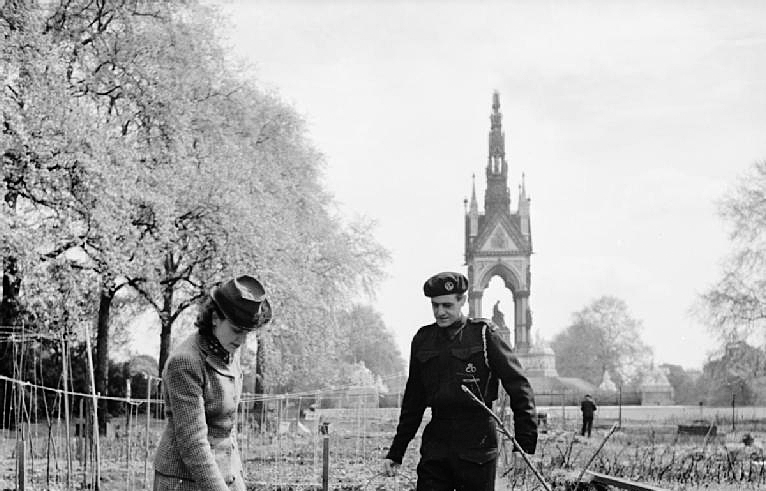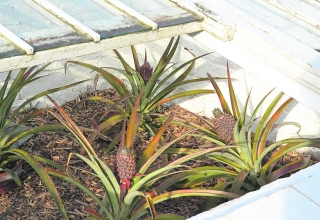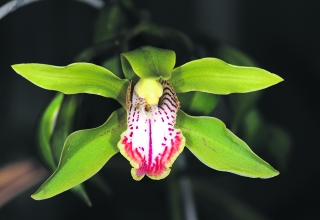
Research has highlighted something we probably all knew – that since World War II gardening has changed almost beyond recognition. Vivienne Lewis explores the biggest of those changes and the impact they have made
More people than ever are gardening. More people than ever are watching TV programmes about gardening. Young people are being attracted to gardening as a career including many more women, with a lot of them becoming head gardeners.
These are headlines about the changes in gardening over the past 70 years for the amateur and the professional gardener. But what’s caused these changes and how different was it all those decades ago?
Going back 70 years take you to the austerity years of World War II when everyone was urged to ‘Dig for Victory’. Flower beds were turned over to growing vegetables because of food shortages which brought in rationing as early as 1940. Everyone had their ration book, with coupons that could be pulled out to give you the rations of basic food for the week, although in rural areas people could get hold of eggs, butter and meat more easily.
Vegetables were even grown in the Tower of London’s historic but now dry moat, where the poppies art installation turned the grass red last year. Land around the Albert Memorial in Hyde Park was dug up to make vegetable growing beds. And all over the country allotments and gardens were filled with vegetables and fruit to augment the weekly rations.
There were a few programmes about gardening on the radio and in the daily newspapers there was Adam the Gardener in the Daily Express and Sunday Express and Mr Digwell in the Daily Mirror.
Rationing continued for several years after the war ended as the country struggled through them, and didn’t completely end for all food items until 1954, although a lot of food had gradually come off rationing.
But the 1950s saw a change as the economy improved and cheap food became more plentiful. Vegetable growing fell out of fashion, demand for allotments fell away, and gardeners concentrated on growing roses, gladioli and bedding plants, annuals bought as seedlings in wooden boxes. Who can remember red, white and blue flower beds for Coronation year in 1953, with white alysum, blue lobelia and small red salvias?!

TV gardeners showed how it should be done, with some now forgotten names but the pioneer guru everyone knows, Percy Thrower. On radio Gardeners’ Question Time had begun travelling around the country in 1947, and is still going strong today.
Container pots and garden centres
The revolution in 1960s horticulture was a long way from pop culture and ‘Flower Power’. Much more mundane, the revolution was in the invention of the garden centre and the advent of containerised plants. But a revolution it was, all the same.

All nurseries had specialised in selling plants full stop, with no frills. The new style garden centres offered so much more – in fact, you could spend half a day there, browsing the plants and gifts before going into the café for a cuppa or even lunch or afternoon tea. The idea was brought to this country from America by Edward Stewart, the founder of Stewarts garden centres in Dorset. He had seen how successful they were in the States and in Canada and could transform his family nursery into a much broader business, offering customers so much more.
Where plants had only been available in season, dug up from a field or grown in wooden boxes, the new plastic pots that replaced heavy clay pots meant that plants could be potted on into containers and sold throughout the year. The horticultural industry was no longer limited to a narrow time span to sell valuable plants – everything from trees to roses, from hostas to evergreen shrubs could be containerised and kept going for customers to buy them at any time.
This had the downside that the garden conditions and the weather had to be right for the plant to grow successfully. But now there was a plethera of information from gardening programmes on television, in specialist magazines and newspapers.
Grow Your Own and The Good Life on TV
Born out of anti-commercialism and ‘hippy’ influences in the 1970s, self-sufficiency was the buzz word. Allotment plots were in demand again.

As we travelled more so our taste buds widened to accept new varieties and new vegetables, so growing courgettes and squashes, chillies and sweet peppers became popular, and a greater variety of herbs. Fashions in flowering plants changed from garish in the 50s and 60s to a paler palette in the 1980s before becoming more of a rainbow today, with dahlias in a huge colour range once again admired and desired.
Not only are there new varieties, but new propagation techniques and more efficient distribution mean that, comparatively, plants and bulbs are now cheaper than ever. Plants such as the beautiful moth orchid which used to be rare and incredibly expensive are far more affordable thanks to micro-propagation.
Websites, blogs – what’s next?
Now there’s more choice than ever before, with so much media interest, gardening websites to browse and blogs to read. Allotment waiting lists are long, while gardens tend to be smaller on new housing plots. Space is at a premium, so trees are kept small in containers, ever popular hanging flower baskets are planted with a wide range of cherry tomatoes and herbs, while climbing plants and wall containers all now help the avid gardener.
A step backwards: since the war many allotments have been sold for housing development – even for the London Olympic Park in 2012. From 1.4 million plots in the war years the number has declined to about 330,000 available today, although some organisations such as the National Trust have started up new allotment plots.
Harsh chemical are being used less and more often replaced by organic fertilisers and biodegradable products, especially for potting up young plants or vegetables before they are planted in the ground. Seventy years ago people used organic material to enrich the soil, but chemical fertilisers became commonplace. Now in this we have come full circle to go back to organic ways of gardening.
While the downturns in the horticultural industry have made it very hard for some nurseries to survive, many specialist nurseries have held their own against the larger garden centres, and discerning customers will travel long distances to find their desired, often more unusual, plants.
Mail order has become email ordering with the growth of the internet.
As the big garden shows like the RHS Chelsea Flower Show, Malvern Spring Show and Gardeners World show have grown massively with expensive entrance prices to match, so smaller garden shows are pointing the way to a more relaxed and cheaper day that gives great value for money.
The success of Toby Buckland’s Garden Festival at Powderham Castle in recent years highlighted that, when thousands turned up to get a day out for a very small outlay, and specialist plant fairs at attractive venues all over the country have stayed popular.
We’ve come a long way from ‘Dig for Victory’ – the choice of plants, the ways to buy them and look after them has never been greater.
Everyone can get involved – starting with the growing numbers of schoolchildren who love to care for their school gardens – so gardening nowadays is for all of us to enjoy.










